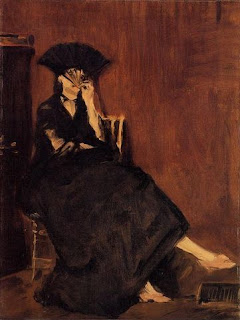Friday, June 18th, 2010
"The Kiss" and the 1889 Exposition
Did you know that a version of Rodin’s The Kiss (1888-89, shown right) was slated to be shown in the 1889 Exposition Universelle in Paris? The marble sculpture wasn’t finished in time (largely due to the serious illness of an assistant), which I think is really unfortunate. The Eiffel Tower was also constructed for the exhibition that year, which obviously ended up being the highlight of the world fair event. I wonder how The Kiss would have been received by the public, in comparison to the popular Eiffel Tower. Would people at the fair have loved it as well? (And what would Gauguin have said about it? Ha ha!)
I like to think about why this sculpture might have been chosen for the 1889 exhibition. What is it about this sculpture that would have been perceived as typically “French?” Obviously not the literal subject matter, since it was inspired by Dante’s Inferno. Perhaps the passion and love embodied in the piece appealed to the French culture? I think it’s likely that this sculpture was selected for both its artistic nod towards Classicism, and also its blatant disregard for proportions and perfection. This sculpture is indeed modern and innovative in that sense, and it definitely would have communicated that idea of French modernity to those who visited the fair.
Why do you think that the French might have wanted this sculpture in the 1889 Exposition Universelle? Why do you like (or dislike – *gasp!*) this sculpture?
The Kiss is one of the featured works of art in “The Private Life of a Masterpiece” BBC series. The episode of The Kiss is quite interesting, since it gives background on the copy of the The Kiss that now belongs to the Tate Modern. I didn’t realize that the Tate sculpture had spent time being 1) hidden under a tarpaulin (due to its scandalous subject matter) and 2) stored in a carriage house and placed under bales of hay or straw! If you’re interested, you can win a copy of this episode by entering my giveaway to receive a free DVD set of “The Private Life of a Masterpiece” BBC series.










